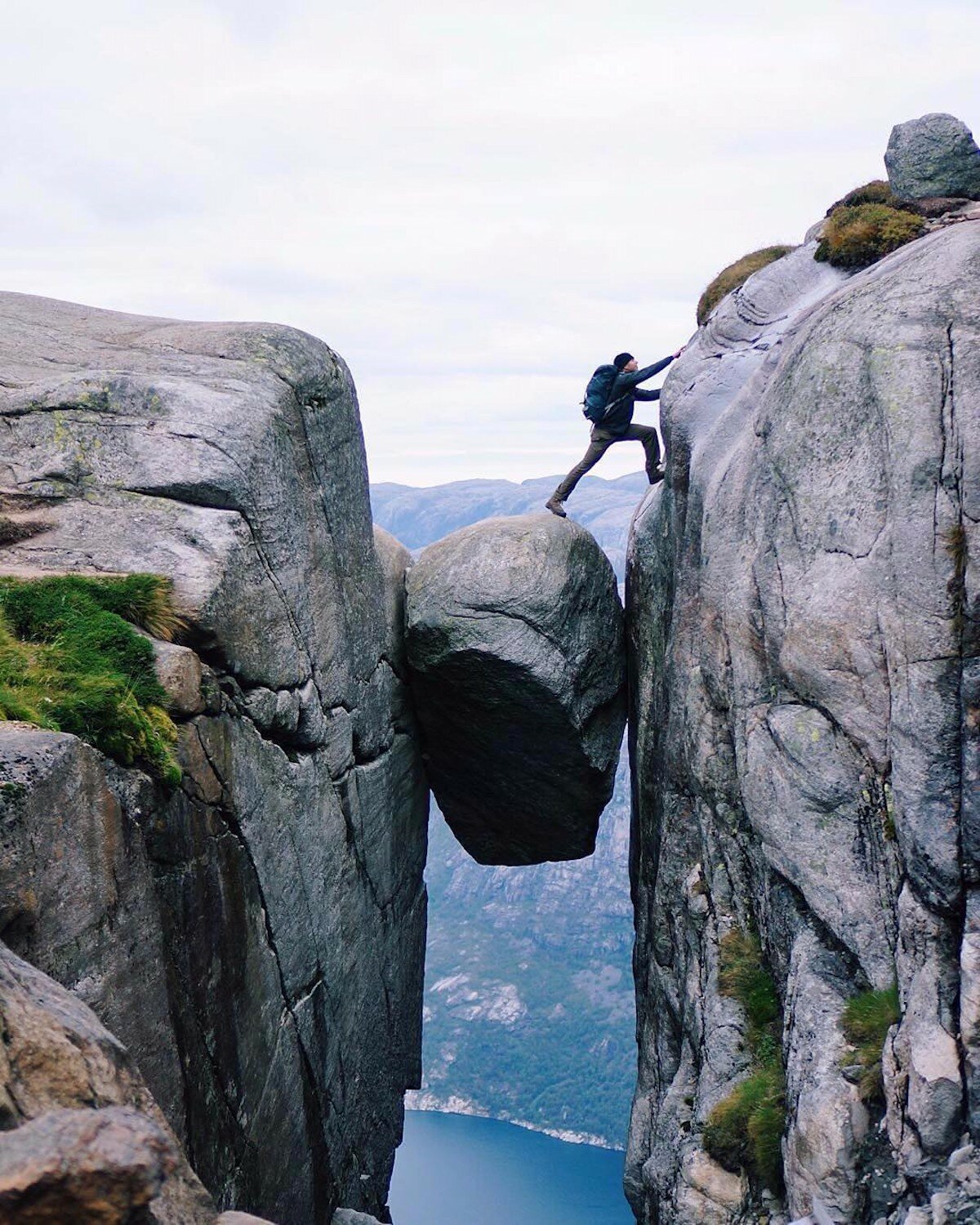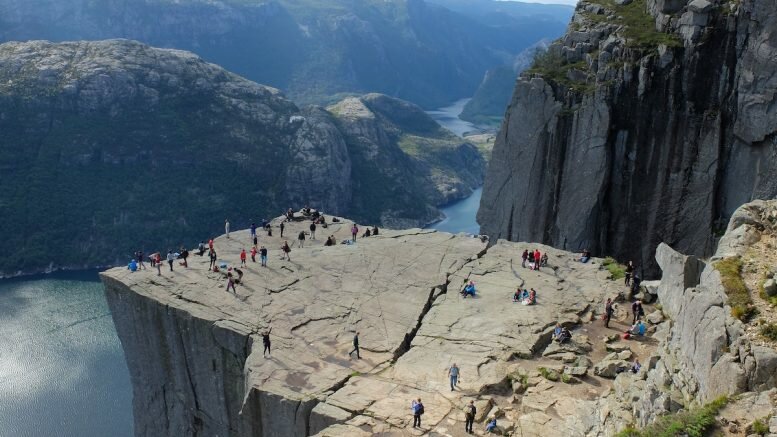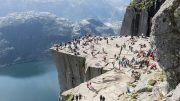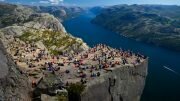All along its craggy and snow-capped mountain peaks, Norway abounds with hiking opportunities. From jutting cliffs and rock formations to the beautiful Pulpit Rock, these one-of-a-kind, unforgettable treks deserve a spot on your bucket list.
Join us on a virtual trek (slash wanderlust inspiration… slash plane ticket-buying push) through the captivating cliff hikes of Norway.
We’re taking you through three of the best destinations in the country to experience the hike of a lifetime – and a fantastically stoney one, at that.
Our selection of Norway’s most rockin’ cliff hikes
Kjeragbolten
In the 10,000-year-plus process of glaciers’ breakaways and journeys from the mainland to the sea, the 984-meter Kjerag mountain was formed.
Kjerag Mountain is located 100 km to the east of Stavanger. To reach this riveting rock, you have multiple options, from car ferries and regular ferries, across scenic drives, to public transport.
No matter your choice of transport, your starting point is the Eagle’s Nest trailhead.
From there on, the two-and-a-half-hour climb consists of three periods of steep climbing combined with two shallow valleys, with the final mile being relatively flat. The views are unbeatable, and a special surprise awaits you on the way: the famous Kjeragbolten – aka, the Kjerag boulder.
Located on the mountain of Kjerag, Kjeragbolten is a boulder wedged in a bottomless crevice of the hillside. The stone throne measures 1084 meters tall.

Plan your trip according to the weather; Kjerag sits on the 50th latitude north.
In December, the sun here sets around 3:45 PM and rises around 9:30 AM, making for about six hours of daylight. In July, the sun sets around 10:50 PM and rises around 4:35 AM: that’s about 18 hours per daylight every day.
December is also the coldest month in Kjerag with temperatures averaging between -2 and 4 degrees Celsius. July is the warmest month with temperatures averaging between 6 and 15 degrees Celsius.
This hike is the highest of our three treks mentioned; so pack an extra-extra layer, especially if you’re visiting during a colder season.
Preikestolen
Preikestolen, also known as Pulpit Rock, is at the top of the list of Norway’s most-visited natural attractions, for good reason.
Pulpit Rock is located about 50 km northeast of Stavanger. To reach it, you can take the highly recommended Norwegian Scenic Route of Ryfylk to Solbakk. Along the way, behold ancient rock carvings from 500 BC. After the dose of history, drive on to the Pulpit Rock’s parking lot.
The round-trip Pulpit Rock hike takes about four hours and it’s six km long. It’s moderate in difficulty and has a 350-meter ascent.
During the May-October hiking season, you can also explore the surrounding 42-kilometer-long Lysefjord by kayak, bike, zip line, boat, glider, and more.
Preikestolen sits on the 50th latitude north. In December, the sun here sets around 3:40 PM and rises around 9:30 AM, making for about six hours of daylight. In July, the sun sets around 10:50 PM and rises around 4:35 AM: that’s about 18 hours per daylight every day.
The Pulpit Rock weather in December is the coldest with temperatures averaging between 0 and 6 degrees Celsius.
July is the warmest month with temperatures averaging between 7 and 17 degrees Celsius.
Trolltunga
Trolltunga, translated to “Troll’s Tongue”, is 1097 meters high with incredible views of Lake Ringedalsvatnet which sits 700 meters below.
Curious about the peculiar name? It’s closely tied to – you guessed it – ancient Norwegian myths about trolls.
Trolls are thought to be afraid of sunlight – because it can petrify them straight into stone. Anyone remember that scene from The Hobbit?
At Trolltunga, someone got caught mid-sentence (or bite…), it would appear.
The Trolltunga hike itself takes anywhere from eight to 12 hours. From the village of Skjeggedal, you’ll hike three hours uphill until you reach Folgefonna National Park.
On your way to Trolltunga, you’ll pass by Tyssebotn and Tyssestrengene Waterfall – plus many other natural wonders – so keep your eyes peeled and camera at the ready.
Once you reach the top, gaze at the lake beneath your feet at the lake and, in the distance, at Folgefonna Glacier.
Trolltunga sits 160 km southeast and inland from Bergen, and, like the city, sits on the 60th latitude north. In December, the sun here sets around 3:25 PM and rises around 9:30 AM, making for about six hours of daylight per day at Trolltunga. In June, the sun sets around 11:00 PM and rises around 4 AM, making for just around 19 hours of daylight per day (every troll’s nightmare).
December temperatures at Trolltunga average between 1 and 4 degrees Celsius. July temperatures are the warmest, averaging between 13 and 17 degrees Celsius.
Which of these three hikes are you most eager to try?
Source: Norway Today




Leave a comment